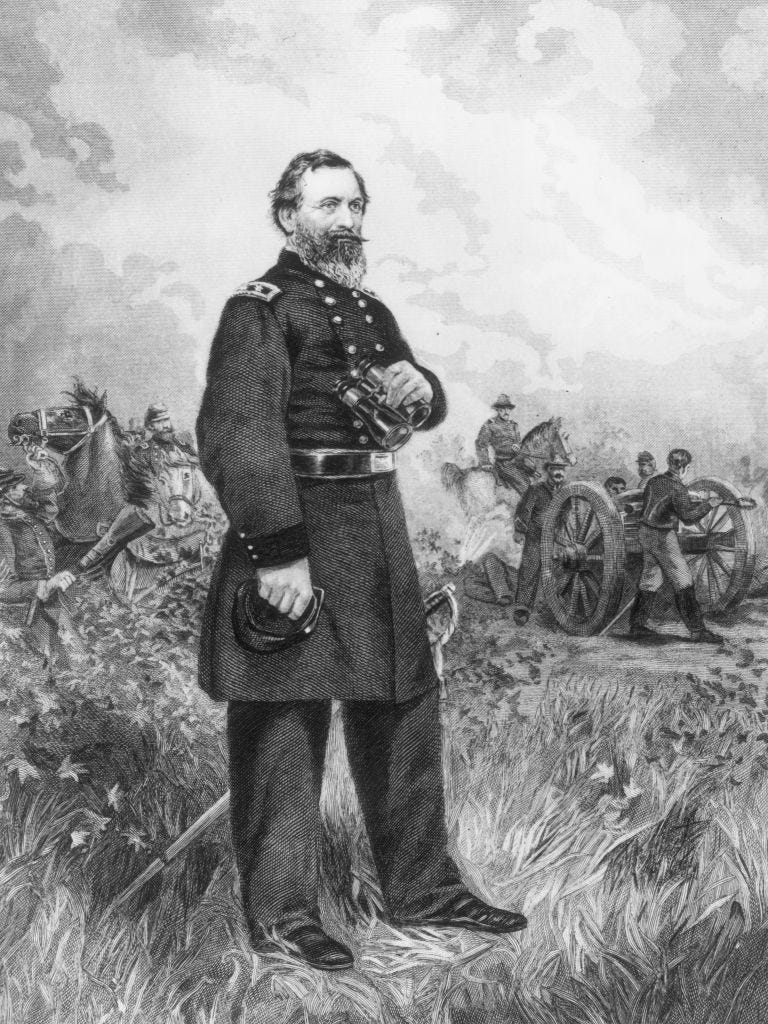
160 years ago on this day (1864): the man for whom Sedgwick County (KS) is named, Maj. Gen. John Sedgwick, was killed in battle in Virginia during the Civil War at the age of 50.
There are statues of Gen. Sedgwick located at Gettysburg National Military Park in Pennsylvania, and on the U.S. Military Academy campus at West Point, New York, but not in Sedgwick County, Kansas.
Sedgwick was the highest-ranking Union casualty to be killed in the Civil War.
Although Maj. Gen. James B. McPherson (another namesake of a Kansas county) was in command of an army at the time of his death and Sedgwick of a corps, Sedgwick had the most senior rank by date of all major generals killed. Upon hearing of Sedgwick's death, Lt. Gen. Ulysses S. Grant repeatedly asked, "Is he really dead?"
During his career, Sedgwick accepted a transfer promotion to the rank of major with the United States Cavalry; he served in Kansas prior to the Civil War.
Sedgwick's death was met with sorrow; even Confederate Gen. Robert E. Lee expressed his sadness over the fate of an old friend. General George G. Meade wept at the news; Gen. Grant characterized Sedgwick as one who "was never at fault when serious work was to be done", and he told his staff that the loss for him was worse than that of an entire division.
Sedgwick died at the beginning of the Battle of Spotsylvania Court House. Confederate sharpshooters were about a thousand yards away, and their shots caused his infantrymen to duck for cover. Sedgwick strode around in the open and was quoted as saying, "What? Men dodging this way for single bullets? What will you do when they open fire along the whole line?" His men continued to flinch and he said, "Why are you dodging like this? They couldn't hit an elephant at this distance." -- that line was among his last words.
He was shot by a Whitworth rifle bullet moments later under the left eye and mortally wounded. His chief of staff Martin T. McMahon said the sharpshooters' bullets were flying all around, and "The same shrill whistle closing with a dull, heavy stroke interrupted me, and I remember distinctly that I commenced to say 'General, they are firing explosive bullets.' when his face turned slowly to me, and blood spurting from his left cheek under the eye in a steady stream, brought to me the first knowledge of our great disaster. He fell in my direction and I was so close to him that my effort to support him failed, and I went to the ground with him." Corps medical personnel were immediately summoned, but Sedgwick never regained consciousness and continued to bleed out for some time.
Gen. Sedgwick is buried near his birthplace of Cornwall Hollow, Connecticut.
